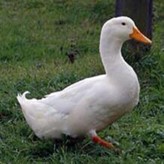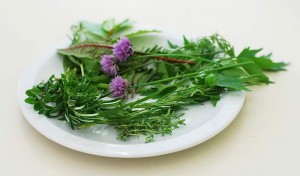 Annuals can add season-long color to beds and borders and also supply a summer full of cut flowers for decorating. Annuals are easy to grow and require little care except watering and occasional deadheading. They can be mixed in with perennials, including shrubs and trees, and fill empty spaces in the garden until later plants grow and mature. They can also be grown alongside vegetables and are well adapted to pots and containers. Here are a few tips on getting started this year…
Annuals can add season-long color to beds and borders and also supply a summer full of cut flowers for decorating. Annuals are easy to grow and require little care except watering and occasional deadheading. They can be mixed in with perennials, including shrubs and trees, and fill empty spaces in the garden until later plants grow and mature. They can also be grown alongside vegetables and are well adapted to pots and containers. Here are a few tips on getting started this year…
Where Should Plant my Annuals?
Know Your Sunshine:
Sun-loving annuals need at least six hours of direct sunlight per day. Direct sunlight means sunlight during the middle of the day, when the sun is at its most intense, without any filtering through branches or other intervening objects.
Partial sun annuals enjoy living where light-shade or partial-shade occurs. These plants need at least six hours of filtered sunlight per day, meaning sunlight that may be partially blocked by branches or other intervening objects.
Love Your Shade:
Shade-loving annuals thrive when they are in shade for much of the day and may even be damaged by too much direct sunlight. Light shade is shade found beneath leafy branches of a tall, stately tree. Heavy shade means no direct sunlight, just dappled light as in the woods.
Should I get Plants or Seeds?
My personal answer is both! I am not a patient gardener and really like instant gratification. I usually purchase some plants ready to flower or in flower as well as plant some similar seeds to fill in the spaces and add different varieties.

Where Should I Shop for Annuals?
Some of the healthiest and prettiest plants can be found at small family owned produce stands. Recently I was shopping for lettuce seeds and stopped at a small stand; they had both the seeds I wanted sold by weight (the most cost effective way to buy them) and such a fantastic price on lettuce plants by the flat that I could afford to get both. We are enjoying lettuce ready for the table and a second crop ready in the near future. When buying annuals, look for healthy, young foliage; leaves should be green. Choose plants that are low and bushy if possible. If plants are held for a few days before planting, keep them under a shade tree and water regularly.
How do I Prepare my Flower Bed?
Whether you are planting in an established bed or creating a whole new bed, you will need to determine the texture and structure of your soil. Don’t panic; this is not as hard as it sounds. The best annual garden soil is composed of an even mix of clay, sand, and silt that drains well but also retains some moisture. In gardening terms this is called good loam. Remember, all soils require regular rejuvenation. Here is where you can use a shortcut to help avoid some of the work. I place a thick mat of collected newspapers down in an overlapping layer to smother any weeds or grass. (I do not use products such as Round-Up on my property) Top the newspaper layer with your own compost or purchase a prepared bagged product. Most annuals do not require deep planting so a good thick layer of prepared garden soil can make this year’s planting easier as well as benefit the soil for future use.

How do I Make my Annuals Continue to Flower?
To make annual flowers continue to bloom, deadhead them by snapping off faded blossoms before the plant can make seed. That way new blossoms will replace the old ones. In fact, you have made the plant believe it hasn’t finished yet. If you prune faded foliage as well, you can even have them bloom with more exuberance.
Have fun with your annual garden. Enjoy the immediate satisfaction of the bright colors and textures. Try some unexpected varieties – they may become new favorites. And don’t be afraid to sprinkle some seeds among your plants for further variety in your garden!






























